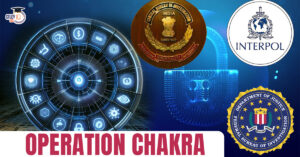Table of Contents
National Digital Health Mission
The National Digital Health Mission is a significant initiative that aims to transform the way healthcare services and information are managed in India. It involves the use of technology to enhance the accessibility, security, and effectiveness of healthcare for all citizens. This mission holds the potential to bring about positive changes in how medical records are stored, shared, and utilized, ultimately benefiting individuals and the healthcare system as a whole.
Read about: Pradhan Mantri Ujjwala Yojana
National Digital Health Mission Launch Date
The National Digital Health Mission, which is now called Ayushman Bharat Digital Mission (ABDM), started as a test on August 15, 2020, in six Union Territories: Andaman & Nicobar, Chandigarh, Dadra & Nagar Haveli and Daman & Diu, Ladakh, Lakshadweep, and Puducherry.
Read about: Swachh Bharat Abhiyan
Background of National Digital Health Mission
The National Digital Health Mission comes from the National Health Policy 2017, which aims for the best health and well-being for everyone, with a focus on preventive care. The Ministry of Health & Family Welfare formed a group led by J. Satyanarayana to make a plan for the National Health Stack. This group suggested making a National Digital Health Blueprint to guide the digital health project. The blueprint recommended creating the National Digital Health Mission, which would help provide digital healthcare services all over the country. The National Health Authority, responsible for the National Digital Health Mission, also looks after Ayushman Bharat.
Read about: Janani Suraksha yojana
Objectives of National DIgital Health Mission
The objectives of the National Digital Health Mission (now known as Ayushman Bharat Digital Mission) are:
- Digital Health Records: To create digital health records for every individual, making it easy for them and healthcare providers to access and manage medical information.
- Health IDs: To issue a unique health ID to each person, enabling a unified identification system for healthcare services.
- Interoperability: To ensure that health data can be shared and accessed securely across different healthcare providers and systems.
- Privacy and Security: To implement strong data protection measures, ensuring the privacy and security of individuals’ health information.
- Telemedicine and Remote Consultations: To facilitate telemedicine services, allowing people to consult healthcare professionals remotely.
- Health Services Access: To enable easy access to healthcare services and reduce the need for carrying physical documents.
- Health Information Exchange: To establish a platform for seamless exchange of health information among various stakeholders.
- Empowerment of Individuals: To empower individuals with control over their health data and enable them to make informed decisions.
- Efficient Healthcare Delivery: To streamline healthcare services, reduce duplication, and improve overall healthcare delivery.
- Digital Health Infrastructure: To build a robust digital health infrastructure that supports efficient and effective healthcare services.
- Health Analytics and Research: To use aggregated and anonymized health data for research and policy-making purposes.
- Promotion of Innovation: To encourage the development of innovative digital health solutions that benefit both patients and healthcare providers.
Read about: Pradhan Mantri Suraksha Bima Yojana
Components of National Digital Health Mission
The National Digital Health Mission comprises four main components:
- National Health Electronic Registries: These are comprehensive databases that include registries of healthcare facilities and healthcare professionals. This helps in streamlining healthcare services and ensuring accurate and updated information.
- Federated Personal Health Records (PHR) Framework: This component addresses two important challenges. First, it allows patients and healthcare providers to access healthcare reports and data easily for effective treatment. Second, it ensures that health data is available for medical research, contributing to advancements in healthcare knowledge.
- National Health Analytics Platform: This platform facilitates the analysis of aggregated and anonymized health data. It aids in research, policy-making, and gaining insights into healthcare trends and patterns.
- Other Horizontal Components: This category includes various key elements that form the foundation of the digital health ecosystem. These include the Unique Digital Health ID, which acts as an individual’s digital health identity. Health Data Dictionaries standardize medical terminologies. Supply Chain Management for Drugs ensures the smooth flow of medicines. Payment gateways facilitate secure financial transactions within the digital health framework.
Read about: Midday Meal Scheme
Salient Features of National Digital Health Mission
The National Digital Health Mission has an organized structure with different levels: apex, board of directors, CEO, and operations. It’s a technology-based healthcare system.
Health ID: Every individual, healthcare provider, and citizen can join voluntarily. This ID stores health information for easy access to benefits.
Health Data Consent Managers: They link with patients’ health IDs, helping exchange records between patients and doctors securely.
Mobile App and Website: Healthcare services are available through a mobile app and official website.
Digi Doctor: Healthcare professionals can serve as digital doctors, giving prescriptions remotely with free digital signatures.
Read about: Atal Pension Yojana
National Digital Health Mission Benefits
According to the Ministry of Health & Family Welfare, successful implementation of the mission can lead to the following benefits:
- Easy Access to Health Records: Individuals can access their health records with just 5 clicks, making it convenient and quick to get their medical information.
- Reduced Diagnostic Tests: Instead of repeating tests for each doctor visit, people will only need to do tests once and can share the results with different healthcare providers.
- Centralized Healthcare Services: All healthcare services will be available in one place, simplifying the process of seeking medical help.
- Continuity of Care: A seamless healthcare journey is ensured, from primary to secondary and tertiary care, providing a consistent quality of medical attention.
Read about: Direct Benefit Transfer
National Digital Health Mission Challenges
The National Digital Health Mission faces challenges that include:
- Data Misuse: Keeping citizens’ health and personal data safe to protect their privacy from unauthorized use.
- Data Leaks: Ensuring strong technology and security measures to prevent any accidental release of sensitive information.
- Profiteering: Preventing misuse of data for financial gains at the expense of citizens’ well-being.
- Foreign Surveillance: Avoiding the risk of foreign entities accessing citizens’ health data without consent.
These challenges highlight the need for robust security measures to safeguard individuals’ data and maintain the mission’s integrity.
Read about: Pradhan Mantri Laghu Vyapari Mandhan Yojana
National Digital Health Mission UPSC
The National Digital Health Mission holds significance for the UPSC exam due to its alignment with the General Studies Paper II (Governance, Polity, Social Justice, and International Relations) of the UPSC Syllabus. Understanding this topic showcases awareness of government initiatives, digital governance, and public healthcare policies. Aspirants can enhance their knowledge through UPSC Online Coaching and gain insights into contemporary socio-political developments. Familiarity with the mission’s objectives, challenges, and potential impact is crucial for tackling questions on technological advancements, data privacy, and healthcare governance. Engaging with this topic through UPSC Mock Test ensures readiness to address questions about India’s evolving digital landscape and its implications for governance and public welfare.
Read about: National Social Assistance Programme (NSAP)


 New Phase of Operation Chakra to Combat ...
New Phase of Operation Chakra to Combat ...
 Bhashanet Portal : Empowering Multilingu...
Bhashanet Portal : Empowering Multilingu...
 Grameen Credit Score (GCS), Objectives a...
Grameen Credit Score (GCS), Objectives a...





















